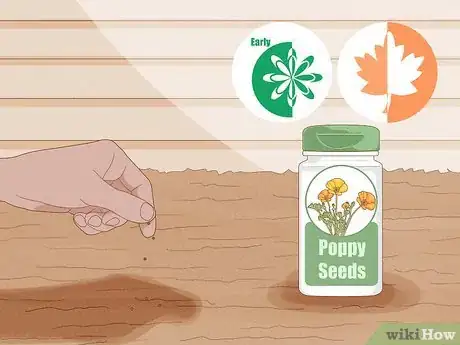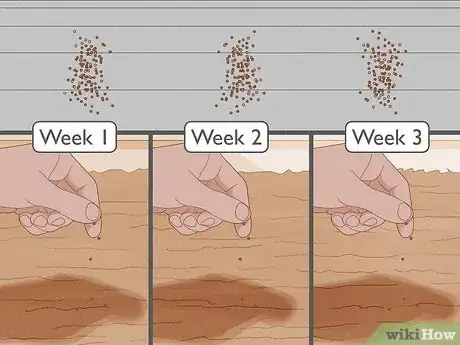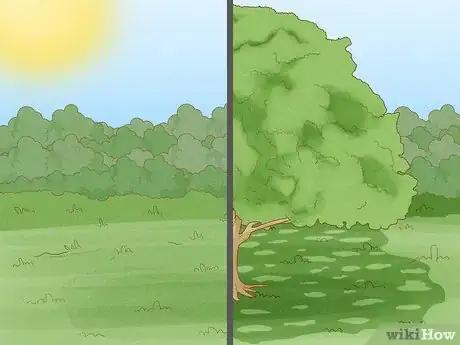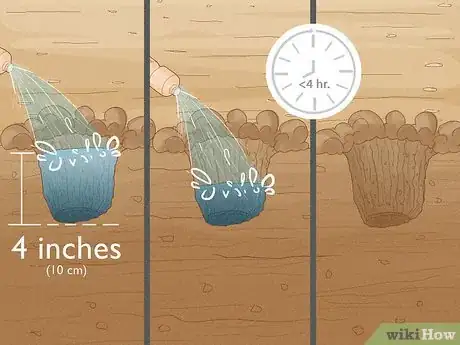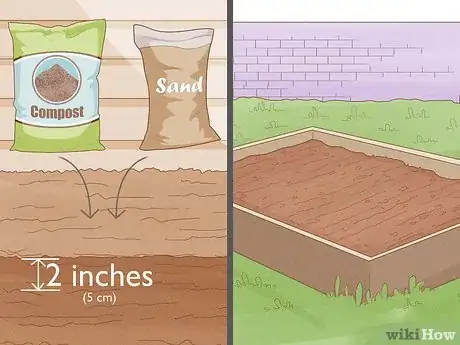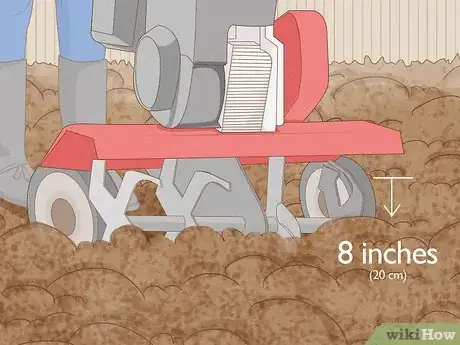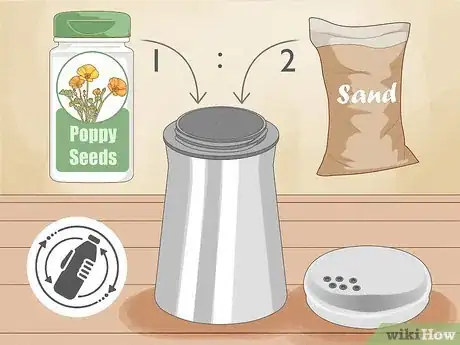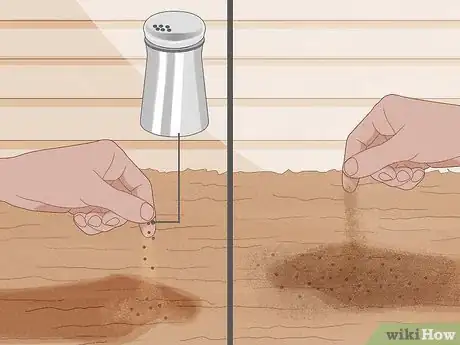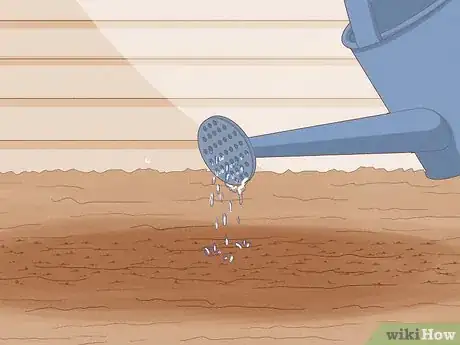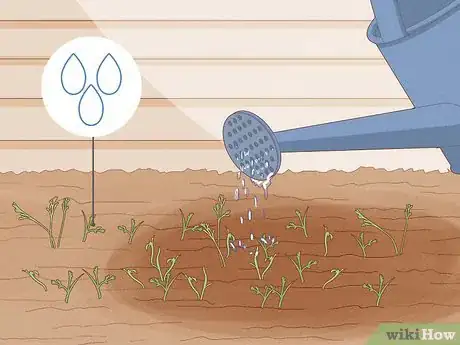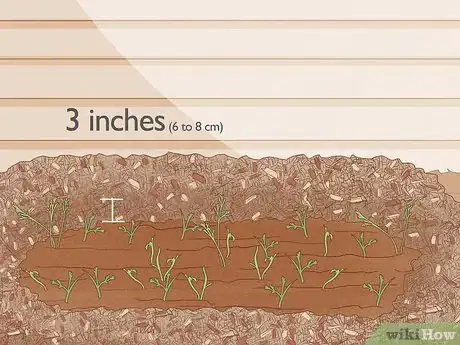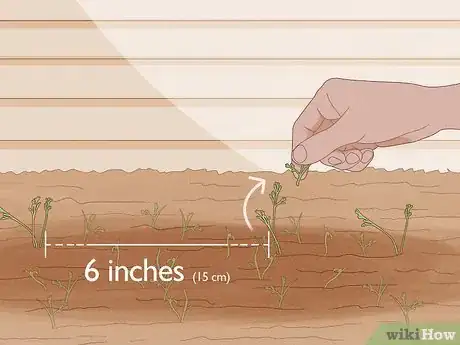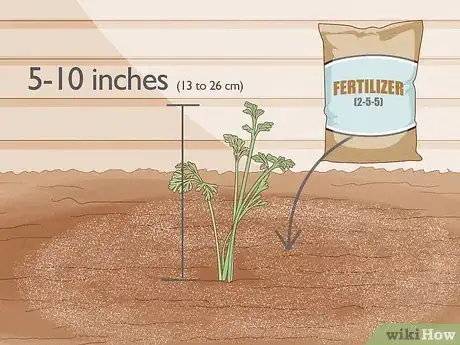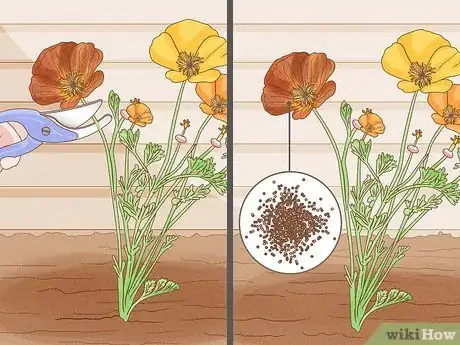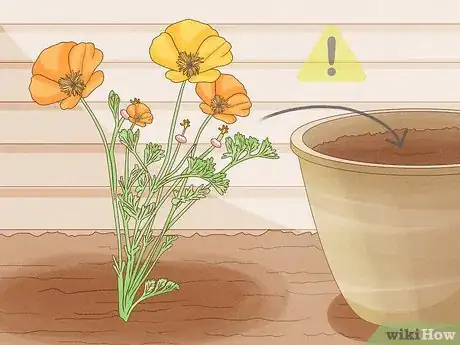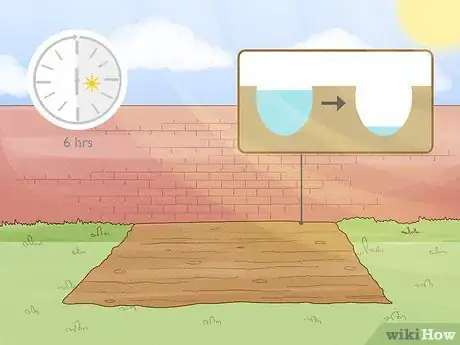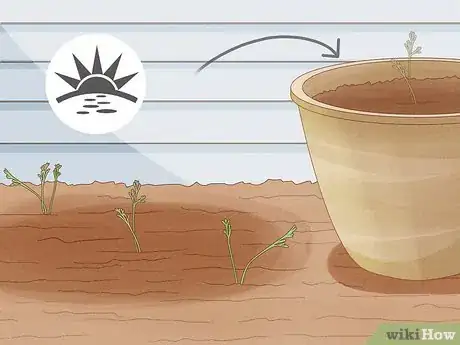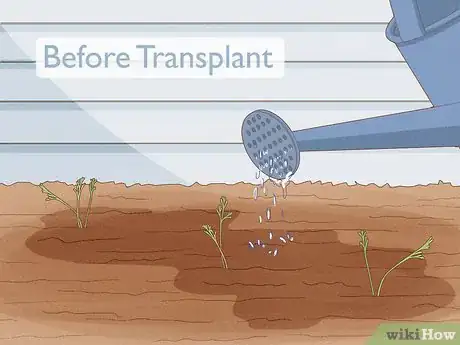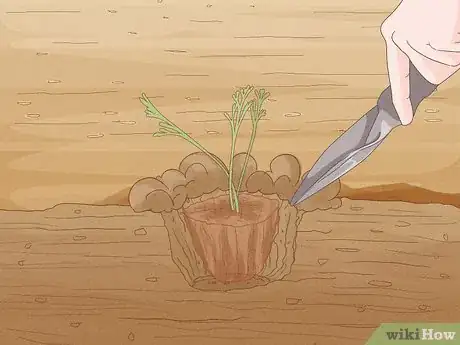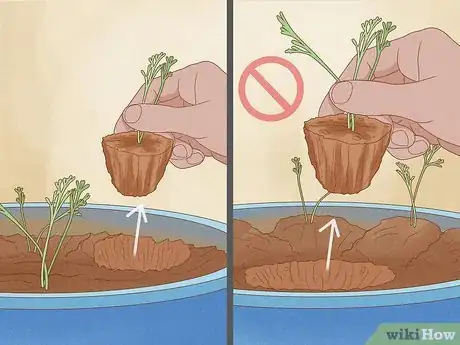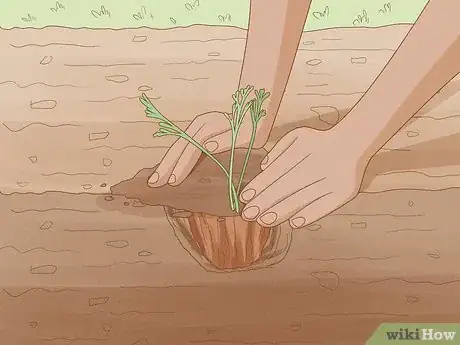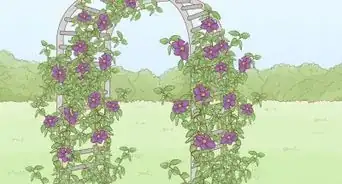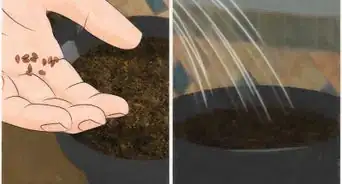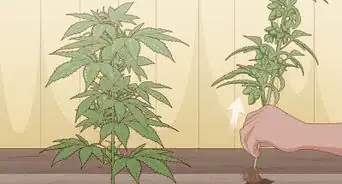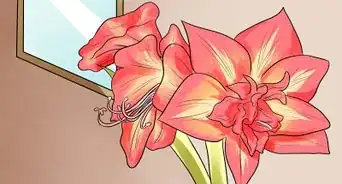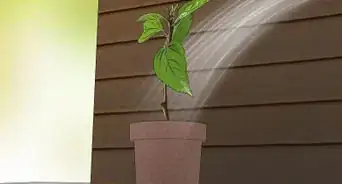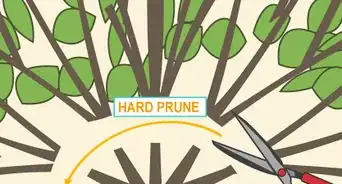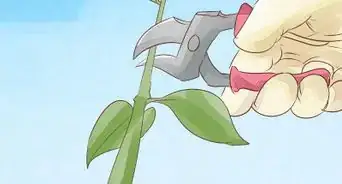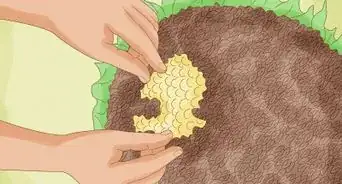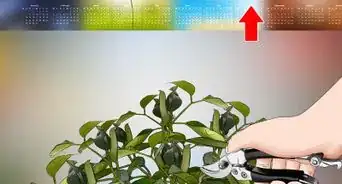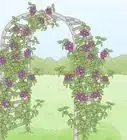This article was co-authored by Andrew Carberry, MPH. Andrew Carberry is a Food Systems Expert and the Senior Program Associate at the Wallace Centere at Winrock International in Little Rock, Arkansas. He has worked in food systems since 2008 and has experience working on farm-to-school projects, food safety programs, and working with local and state coalitions in Arkansas. He is a graduate of the College of William and Mary and holds a Masters degree in public health and nutrition from the University of Tennessee.
wikiHow marks an article as reader-approved once it receives enough positive feedback. This article received 36 testimonials and 100% of readers who voted found it helpful, earning it our reader-approved status.
This article has been viewed 756,357 times.
Poppies are versatile, show-stopping plants that include several varieties, from the big, bold Oriental poppy, which can grow as tall as 4 feet (1.2 m) (122cm), to the demure Alpine poppy, topping out at about 10 inches (25cm). Poppies are tough plants that can thrive in any well-draining soil, although these tips will teach you how to grow them to encourage a healthy, blooming flowerbed. Once you have flowering poppies, you will likely have enough seeds to plant new poppies year after year.
Steps
Planting the Seeds
-
1Prepare to plant in autumn or early spring, depending on your local climate. Poppy seeds require exposure to cool or cold temperatures before they will reliably sprout. As long as the winter temperatures in your area do not fall below 0ºF (-18ºC), you may plant the seeds in autumn, before the first frost. In colder climates or if convenient, plant the poppy seeds in spring, as soon as the ground thaws.
- The temperatures that allow for autumn planting correspond to United States Plant Hardiness Zones 7 and higher.[1]
- If the winter temperatures in your area fall below -20ºF (-29ºC), consider planting the cold-resistant Iceland poppy.
-
2Consider planting in several stages. If you divide your poppy seeds into groups and plant each group a week or two apart, your garden will have colorful flowers for a longer period of time. You may wish to plant half in the first week or two of spring, and the other half later in the spring to see which group suits your climate and poppy variety best.
- If you will be planting poppies in autumn, then you don’t need to plant in stages.
Advertisement -
3Select an area with full sun or partial shade. Generally, poppies grow best when they receive at least six hours of sunlight a day. However, if you live in a hot climate, select a spot where the poppies will be protected during the intense heat of the afternoon.
- Purple poppies may retain a brighter, more attractive color in partial shade than in full sun.[2]
-
4Test soil drainage. Soil with excellent water drainage is crucial, as poppies will rot in waterlogged soil. This is especially important during winter, when soil becomes wet or frozen. Begin testing by digging a hole 4 inches (10 cm) deep. Fill the hole with water, allow it to drain completely, then fill it a second time. Time how long it takes to drain again: this should take no more than four hours at the very most, and preferably less.
-
5Improve soil quality and drainage if necessary. If you cannot find a location in your yard with good drainage, try mixing the top 2 inches (5cm) of soil with compost and a little sand, or building a raised bed. Perennial poppies, which are able to live for longer than one year, may require compost or a store-bought garden soil to thrive even if the existing drainage is adequate.[3]
-
6Till the soil to loosen it if necessary. Use a shovel or tiller to loosen compact soil to a depth of approximately 8 inches (20cm). Poppy seeds grow one long taproot straight downward to collect water, and may not be able to push this important root through soil that is too hard.[4]
-
7Mix the poppy seeds with sand. Pour the poppy seeds in a small container such as a pill bottle or pepper shaker. Add some sand, roughly twice as much by volume as the poppy seeds, and stir or shake them together. Poppy seeds are tiny and can clump together when sown. The sand will help space the seeds out, making it easier to plant them evenly.
-
8Scatter the mixture of seeds and sand barely under the soil. Sprinkle the poppy seeds and sand directly on top of the soil, then cover the seeds with a light dusting of fine soil. Don't bury the seeds, as too much soil will block available sunlight and prevent the tiny poppy seeds from germinating.
- Avoid planting the seeds in clumps, which will interfere with growth. If you are planting poppies across a large area, take handfuls of seed and sand mixture and throw them out away from you as you walk across the garden or field.
-
9Water the newly-planted poppy seeds. Use a watering can or spray bottle rather than a strong hose, in order to prevent washing away the tiny poppy seeds. Keep the soil lightly moist once mild spring weather begins. Depending on the poppy variety, it should then take 10 to 30 days for the seeds to sprout.
Caring for Poppy Plants
-
1Water as necessary. Poppy plants may rot and die in soaked soils, so only water when the soil feels dry to a finger's depth. Typically, you only need to water the plants once every several days. Increase the amount of water per watering session in hot weather or if the poppies turn brown.
- Avoid watering plants during the early afternoon, especially in sunny weather. The heated water can burn the leaves, and it may evaporate before it can be absorbed.
-
2Reduce the chance of weeds. While it's a good idea to remove weeds competing with your poppies as you see them, young poppy plants are small and easily pulled up by accident or mistaken for undesirable plants. Reduce the ability of weeds to grow in the first place by spreading two to three inches (6 to 8 cm) of organic mulch around the plants. A mulch such as bark chips will look attractive, and will keep the soil moist.
-
3Cut out excess poppy plants once they've started to grow. Once the plants are one or two inches tall (2.5–5 cm), cut the smaller or weaker plants at the base using garden shears. Keep each remaining plant at least 6 inches (15cm) apart for the best chance at healthy growth and flowering.
- Do not pull the plants out as this may disturb the root systems of the neighboring poppies.
- Spacing plants out in this manner may also reduce the chance of mold and pest attacks, due to good air circulation and lower frequency of transmitting these problems from one plant to another.
-
4Fertilize only if necessary. If you wish to hasten the growing rate, or if your soil is poor, you may add fertilizer once the plants are at least 5 inches (13cm) tall, and preferably 10 inches (26cm) for taller species. Use a low nitrogen, neutral pH fertilizer and apply as instructed on the packaging.[5]
- Fertilizers display the balance of nitrogen, phosphorus, and potassium using three numbers. A low nitrogen fertilizer will have a lower first number, for example 2-5-5.
-
5Remove dead blooms for additional flowers, or leave them on to cause the plants to seed. Removing the spent blooms where they meet the stalk will encourage the plant to keep blooming throughout the summer. If left alone, the plants will turn yellow and wilt, but after several weeks they will drop their seeds naturally and likely result in dozens of new plants next year.[6]
- Note that you should not cut off withered leaves from perennials if you would like them to remain healthy and bloom again next year.[7] Allow the leaves to die naturally, and hide the brown color with longer-blooming flower varieties if you wish to keep your garden colorful.
-
6Acquire seeds from your best plants. If you would like a new crop of poppy seeds, cut off the bulbous seed pods once they stand vertical and feel chalky to the touch. Dry them in the sunlight, cut them open, and shake them through a sieve over a container to catch the poppy seeds in.[8] Because each plant produces hundreds of seeds, limit your collection to the healthiest and most attractive plants.
Transplanting Poppy Plants
-
1Avoid transplanting adult plants where possible. Transplanting plants allow you to place the poppies more accurately, rather than casting them across the garden and seeing which seeds mature. However, due to their single, fragile taproot, poppies are easily killed during transplanting, especially large, adult plants. If possible, transplant poppy plants when they are young seedlings less than 3 inches (7.5cm) tall, and leave adult plants in their current container.
- If you must transplant adult, perennial poppy plants, try to do so in late summer, after the most active growth period but before they begin to seed.[9]
-
2Check the soil in your new location. Poppies require loose, well draining soil, and exposure to at least 6 hours of sunlight a day. Improve the soil by mixing in compost or manure if necessary.
- More detail can be found in the section on planting seeds.
-
3Transplant in the evening if possible. Poppies are infamously fragile after transplanting, and they are more likely to die if they are exposed to more sunlight. Transplant in the early evening whenever possible to give them a full night of darkness to adjust to their new situation.[10]
-
4Water the seedlings an hour before transplanting. It may take time for the poppies to adjust to the new location before the root begins to take in more water. Make sure they have at least some water stored already by watering them an hour or more before the transplant.[11]
-
5Dig a hole in the new location larger than the root ball. If you were growing your seedling in a small container, make the hole larger than the container. Otherwise, you may need to guess at the size required, or pull out an extra seedling you do not intend to grow to examine its size.
-
6Remove a clump of soil around the poppy plant carefully. If you are transplanting from a container of several seedlings, carefully gather the soil around a central seedling, detaching other seedlings in the soil or moving them to the edge of the pot. This central seedling should not be handled directly, in order to minimize the damage.
-
7Plant the poppy plant to the same depth in the new soil. Try to keep the plant buried at the same depth it was before. Move it as gently as possible to avoid damaging the roots. Pack the soil loosely around the plant. Water it to hold the soil together, then care for it as you would any poppy plant.
Expert Q&A
Did you know you can get expert answers for this article?
Unlock expert answers by supporting wikiHow
-
QuestionHow often should I water poppy seeds?
 Andrew Carberry, MPHAndrew Carberry is a Food Systems Expert and the Senior Program Associate at the Wallace Centere at Winrock International in Little Rock, Arkansas. He has worked in food systems since 2008 and has experience working on farm-to-school projects, food safety programs, and working with local and state coalitions in Arkansas. He is a graduate of the College of William and Mary and holds a Masters degree in public health and nutrition from the University of Tennessee.
Andrew Carberry, MPHAndrew Carberry is a Food Systems Expert and the Senior Program Associate at the Wallace Centere at Winrock International in Little Rock, Arkansas. He has worked in food systems since 2008 and has experience working on farm-to-school projects, food safety programs, and working with local and state coalitions in Arkansas. He is a graduate of the College of William and Mary and holds a Masters degree in public health and nutrition from the University of Tennessee.
Food Systems Expert
-
QuestionShould I cut back greenery after poppies are finished flowering?
 Andrew Carberry, MPHAndrew Carberry is a Food Systems Expert and the Senior Program Associate at the Wallace Centere at Winrock International in Little Rock, Arkansas. He has worked in food systems since 2008 and has experience working on farm-to-school projects, food safety programs, and working with local and state coalitions in Arkansas. He is a graduate of the College of William and Mary and holds a Masters degree in public health and nutrition from the University of Tennessee.
Andrew Carberry, MPHAndrew Carberry is a Food Systems Expert and the Senior Program Associate at the Wallace Centere at Winrock International in Little Rock, Arkansas. He has worked in food systems since 2008 and has experience working on farm-to-school projects, food safety programs, and working with local and state coalitions in Arkansas. He is a graduate of the College of William and Mary and holds a Masters degree in public health and nutrition from the University of Tennessee.
Food Systems Expert
-
QuestionWhat time of the year do poppies bloom?
 Community AnswerFor annual poppies such as Somniferum, Setigerum, BreadSeed, they usually bloom directly following the summer solstice. That's when they usually kick into flowering stage or begin to "bolt" (depending on whether you planted in spring, or if you planted the previous fall - in which case, they may bloom sooner). But only if the temperatures remain below 90ºF, as they risk overheating if hotter. eave them in the ground until they turn brown and the pods begin to "rattle" with seeds. The video in this article will help you to understand.
Community AnswerFor annual poppies such as Somniferum, Setigerum, BreadSeed, they usually bloom directly following the summer solstice. That's when they usually kick into flowering stage or begin to "bolt" (depending on whether you planted in spring, or if you planted the previous fall - in which case, they may bloom sooner). But only if the temperatures remain below 90ºF, as they risk overheating if hotter. eave them in the ground until they turn brown and the pods begin to "rattle" with seeds. The video in this article will help you to understand.
Warnings
- Slugs can threaten young poppy seedlings. Protect the plants by using disposable, clear plastic cups as mini greenhouses until the plants have out-grown them. Cut a few holes near the top of the upside down cups and weigh them down with a rock.⧼thumbs_response⧽
- If mold has started growing on a poppy plant, you may attempt to treat with a gardener's fungicide, but the plant has a low chance of survival. Keep plants spaced out and reduce watering to prevent creating an environment where mold can thrive.⧼thumbs_response⧽
Things You'll Need
- Manure or compost
- Poppy seeds
- Pill bottle or small container
- Sand
- Stick or hoe
- Hose and spray nozzle or watering can
- General purpose liquid or granular fertilizer
- Organic mulch
References
- ↑ http://planthardiness.ars.usda.gov/PHZMWeb/
- ↑ http://www.canadiangardening.com/plants/perennials/grow-perennial-poppies/a/28501
- ↑ http://www.canadiangardening.com/plants/perennials/grow-perennial-poppies/a/28501
- ↑ http://organicalbotanicals.com/tutorial-how-to-grow-somniferum-poppies/
- ↑ http://www.growingwithplants.com/2012/03/introduction-to-poppies.html
- ↑ http://www.growingwithplants.com/2012/03/introduction-to-poppies.html
- ↑ http://www.canadiangardening.com/plants/perennials/grow-perennial-poppies/a/28501
- ↑ http://organicalbotanicals.com/tutorial-how-to-grow-somniferum-poppies/
- ↑ http://www.hortmag.com/weekly-tips/transplanting-oriental-poppies
About This Article
To plant poppies, start in the fall if you live in a warm climate, or the spring if you live in a cooler climate. Mix your poppy seeds with some sand in a small container, breaking up the clumps of seeds and stirring them up, which will make them easier to plant evenly. In a sunny, well-drained area, sprinkle the sand and seed mixture on top of the soil, and only cover them with a fine dusting of soil over the top, since they need light to germinate. Keep the seeds only slightly moist, and they should sprout within 30 days. To learn more from our Food Systems Expert co-author, like how to transplant your poppies, keep reading the article!
